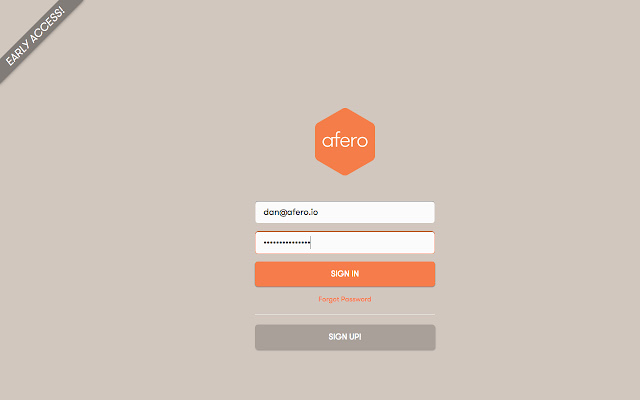Afero Profile Editor in Chrome with OffiDocs
Ad
DESCRIPTION
Build device profiles and connections between the Afero Cloud, a smart device, and the Afero mobile application.
The Afero Profile Editor is designed for developers who want to get a jumpstart with our reference designs that provide default device profiles and other essential elements to suit their device needs.
Use the Profile Editor to define your IoT device's attributes and values, select the UI controls needed to set the values, and design how these controls are presented to the user in Afero mobile application.
You will need to use one or more of the following products with the Afero Profile Editor: * An Afero Modulo development board, to be used standalone or in conjunction with an external board equipped with its own microcontroller.
* An Afero Plinto shield, to be used in conjunction with an Arduino® * A standalone ASR-1, to be directly integrated into a product and used either standalone (multiple I/O ports provided) or in conjunction with a host microcontroller.
Afero development boards and other information are available at developer.
afero.
io.
Release Notes: v0.9.4 * Fixed bug that causes publishing to time out erroneously v0.9.3 * A toggle "switch" UI control is now supported.
* Max length for string data types is now clearly defined.
* You can now set a GPIO attribute to Active Low.
* You can now set a GPIO attribute to Pulse.
* On the Publish screen UI window it's now easier to identify devices, and you can sort the columns.
* When starting a new project you can use the project name to have a new subfolder created automatically.
v0.9.2 * Preview your UI controls in the mobile app: As you define your UI Control Groups, click the Preview UI button to see a preview of how your UI will appear in the mobile app.
(A "Preview Device" is added to your account for the purposes of UI testing.
) Use this in conjunction with the Attribute Tester (more about that below) to see how the UI looks with various attribute values.
* Test your device attributes: Before you publish, you can open the Attribute Tester for your device.
Change the values to see the effect on both the mobile app UI and your device.
* Specify Bluetooth advertising interval: From the Device Type window, you can now set the latency of your device's advertising interval.
The longer the interval, the lower the power requirement on your device's battery.
Optimize for your device.
* Input attributes can be set as a latch: When you set a GPIO input attribute to operate as a latch, it will store a value until the value can be successfully transmitted to the Afero Cloud.
This is handy for holding, then reporting, a sensor state change even when the state has gone back to normal.
* Bind the value of one attribute to another: When you set one attribute to bind to another, any bound attribute value change is immediately propagated to the binding attribute.
This feature is useful when you have independent ways to change a given state of a device.
Additional Information:
- Offered by www.afero.io
- Average rating : 0 stars (hated it)
Afero Profile Editor web extension integrated with the OffiDocs Chromium online
















